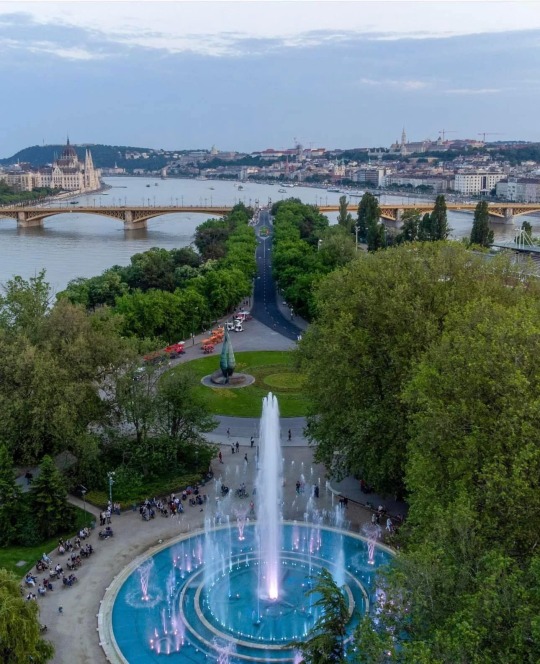Budapest Travel Guide Travel, Gastro, Health, Lifestyle and more
Don't wanna be here? Send us removal request.
Text

The first statue of Saint Stephen in Budapest was completed from 1906. Although the founding king of Hungary has always been highly respected in the country, the great work of Alajos Strobl was completed slowly. The first statue of King Stephen in Budapest was inaugurated in 1906 next to Matthias Church almost 40 years after it was first planned. The cult surrounding Saint Stephen has always been strong in Hungary, and his feast day, also known as the State Foundation Day, is one of the greatest holidays in the country. In light of this, it is interesting that Hungary's founding king did not have a worthy statue in Budapest until the beginning of the 20th century.
4 notes
·
View notes
Text

Fisherman’s Bastion in Budapest is one of the top Budapest attractions without a doubt. The present day lovely lookout towers / decorative fortification of Fisherman’s Bastion were built in the 19th century to serve as a lookout tower for the best panoramic views in Budapest, Hungary. Needless to say, there used to be real castle walls where now you can take fantastic photos from, but the present day structure has never served as an actual fortification in Buda.
5 notes
·
View notes
Text

This outstanding fountain on Margaret Island is considered to be one of the largest in Europe. The musical fountain sets hourly music shows, and a light show at night.
The fountain opened in 1962. At first there was live music at the fountain. It was later electronized.
5 notes
·
View notes
Text

The ‘green column bath’ of Budapest – Rudas Thermal baths The beautiful building of Rudas bath made a name in the world of Hollywood movies as well, in 1988 the bath was used as a shooting place for the action movie Red Heat, starring Arnold Schwarzenegger and James Belushi, and in 2012 for some sceneries of the Borgias with Jeremy Irons. Rudas Bath’s Turkish-style bathhouse was built in the 1560s by Sokullu Mustafa, the that time Pasha of Buda. During the 150 years of Turkish reign in Hungary, this was the biggest bath built in Buda. At that time the warm water arrived to the pools from no less, then 21 hot springs. After the that time colour of 8 the pillar sustaining the huge dome above the octagonal central pool, the Turks called the bath Jesil Direkli Ilidzsami, – ”the bath with green columns”. The dome, the big pool, and the stairs leading into the central pool are still the original ones. Once upon a time this pool got light through the still can be seen elephants eyes, dotting the lanterna of the 10 m wide cuppola even today. When you are in a mood for swimming, beside the pools built by Turkish, there’s a large swimming pool underneath a beautiful, two-story, classicist-style building, which is an addition of the 19th century. The swimming pool, operating as a therapeutic swimming facility and with a sauna, was built in 1896. The thermal bath has been visited from 1936 on exclusively by men. All over inside the Rudas, one can feel a light smell of minerals, as the hot spring feeding the bath is rich in calcium, magnesium, hydrogen-carbonate, sulfate and sodium. From the drinking wells located on the hallways you can even taste the healing water of the spring. Rudas bath was almost completely destroyed during WWII. The bath was reconstructed step by step, first in 1952, then 1986, 2006 and 2012. In its drinking hall – reopened in 1965 – the water of the springs Hungária, Attila and Juventus can be consumed for the purposes of a drinking cure.
Blaze
0 notes
7 notes
·
View notes
Text

Not Your Usual Souvenir Hunt: Visit Gozsdu Weekend Market
Open between 10 AM and 5 PM, from Friday to Mondays this summer, stopping by buzzing Gozsdu Weekend Market offers more than a simple shopping experience.
6 notes
·
View notes
Text

Nestled on the border of Austria and Hungary, Sopron is a hidden gem steeped in centuries of history and enriched with a vibrant cultural scene. Myriad attractions that make Sopron a must-visit destination, providing a thorough exploration of its historic sites, culinary offerings, and natural beauty.
3 notes
·
View notes
Text

Well of Nereids erected in Pest in 1835. This was the first publiv well in the city decorated with human statues, and what statues!
4 notes
·
View notes
Text

Trinity statue in Buda Castle. In the background the old-new, renovated Ministry of Finance.
3 notes
·
View notes
Text

Visit Pannonhalma Archabbey the 1000 years old monastery, a uNESCO world Heritgae site of Hungary
3 notes
·
View notes
Text

The roof what only bird can see, Postal Bank Budapest
7 notes
·
View notes
Text

Since its foundation in 1826, the Herend Porcelain Manufactory has been making a wide variety of porcelain sets and ornamental pieces of the highest quality. By today it has become the largest manufacturer of its kind in the world – where, observing centuries-old traditions, every work phase – from throwing to painting – is performed by attentive hands manually even today. With a free combination of 16,000 forms and 4,000 patterns, the product range is inexhaustible. Every piece symbolizes exceptional quality, beauty, and value.
4 notes
·
View notes





